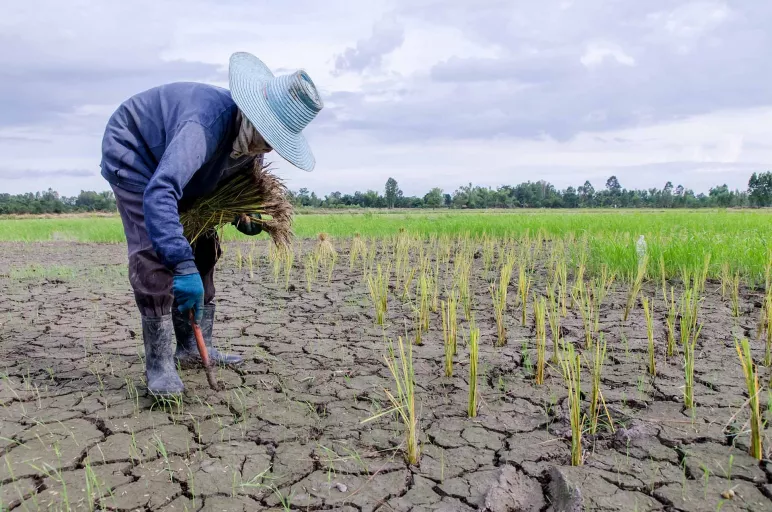
Why a China+1 Supply Chain Model Makes More Sense Than Ever
- China’s summer heatwave is over, but drought conditions are still impacting agricultural and manufacturing sectors.
- Future climate change driven disruptions may make a China+1 strategy more attractive to enterprises.
- Reduced hydropower capacity during the heatwave increased demand for coal and could impact companies’ progress toward sustainability objectives.
October 07, 2022 | Supply Chain Risk Management 2 minutes read
The record-setting heatwave that ravaged China over much of the summer has eased – but drought conditions continue after the country’s longest heatwave on record caused wildfires, power outages and crop failures.
During the heatwave, lower water levels wrought havoc on the country’s hydropower capacity, leading authorities to impose restrictions on industrial power consumption. Companies with a manufacturing base in China, such as carmaker Toyota, battery maker CATL and EV giant BYD, were forced to shut down temporarily.
While the power is back on now, the risk of disruptions to global supply chains reinforces the importance of having the right supply chain strategy in place to enable businesses to withstand today’s disruptions and anticipate tomorrow’s.
Moving Away from A China-Centric Supply Chain?
Specifically, a China+1 strategy, whereby companies diversify their production or supplier base by investing in operations in other countries is worth considering, especially since climate change is predicted to drive more extreme weather patterns in the future.
Companies should balance the risk of shutdowns against the increased cost of operating a more geographically diverse supply chain.
The COVID-19 pandemic exposed the weaknesses in supply chains operating with a Just-in-Time model . Yet, increasing safety stock and moving to a Just-in-Case model isn’t necessarily the answer.
Making complex global supply chains resilient, flexible and sustainable requires long-term planning and investments, as well as commitment from leadership. A resilient supply chain will likely need to incorporate sourcing and manufacturing options both in and outside of China.
The Impact on Sustainability
In addition to considering whether to shift from a China-centric supply chain to ensure supply continuity, companies should consider the impacts on sustainability. When the heatwave forced China to curb power consumption as a result of diminished hydropower capacity, it also drove greater use of coal to cover the deficit. Chinese coal imports from Russia rose in August to the highest level in five years.
To stay on track to meet Scope 3 emission reduction goals , companies may need to consider the impact of greater reliance on coal-fired power plants in the event of future environmental disruptions, whether in China or elsewhere.
Common Factors for Building Supply Chains That Are Both Resilient And Sustainable
One thing supply chain leaders have learned since the pandemic is that it’s not a mutually exclusive endeavor to make supply chains both more resilient and more sustainable.
Both involve developing greater visibility, collaboration and intelligence to run supply chains more efficiently.
To build resilience and ensure supply continuity, reexamining the supply network and looking at a China + 1 strategy is an important lever.
Increasing focus on digitalization through modern supply chain platforms that enable greater visibility, tighter collaboration between partners and AI-powered insights is another tool that enterprises have available to mitigate future disruptions.



